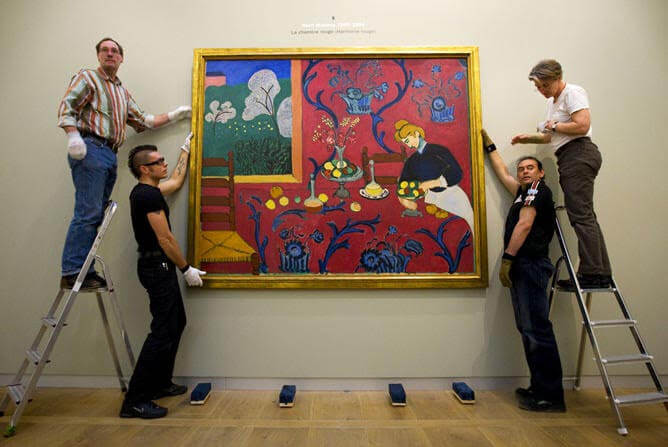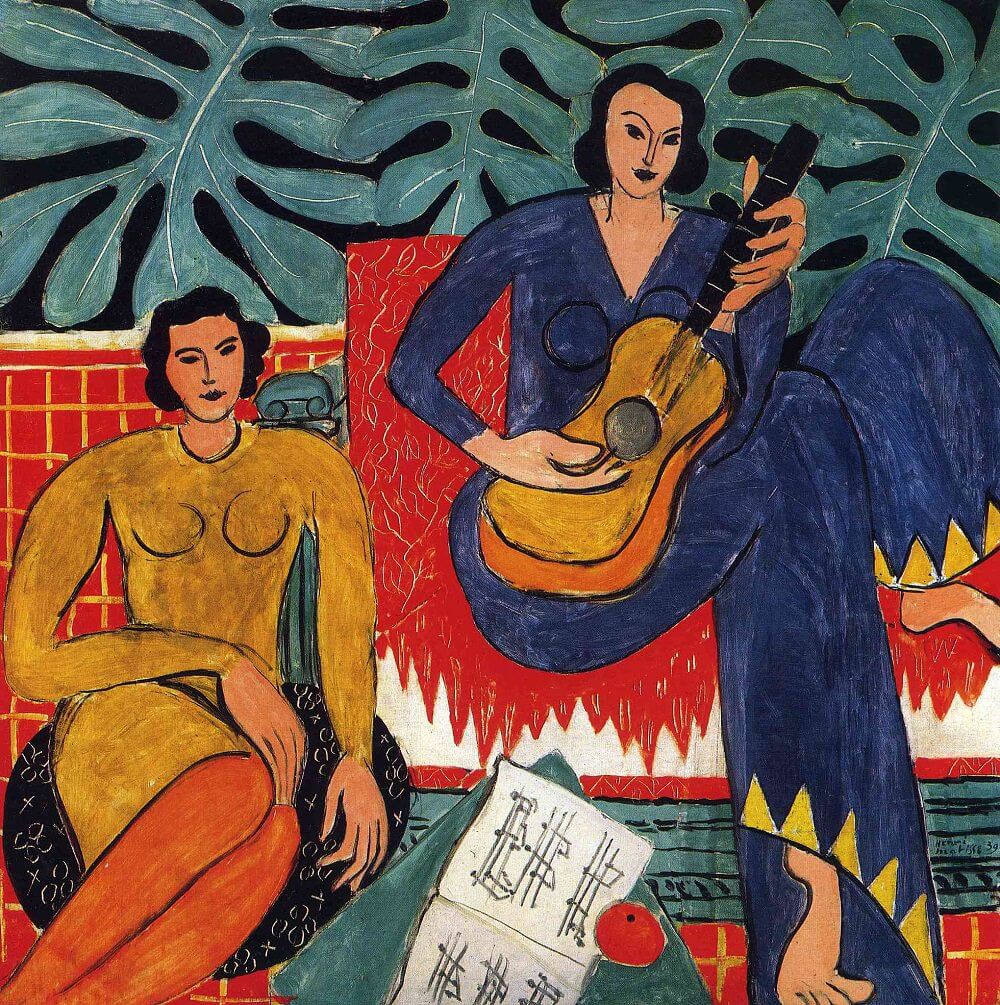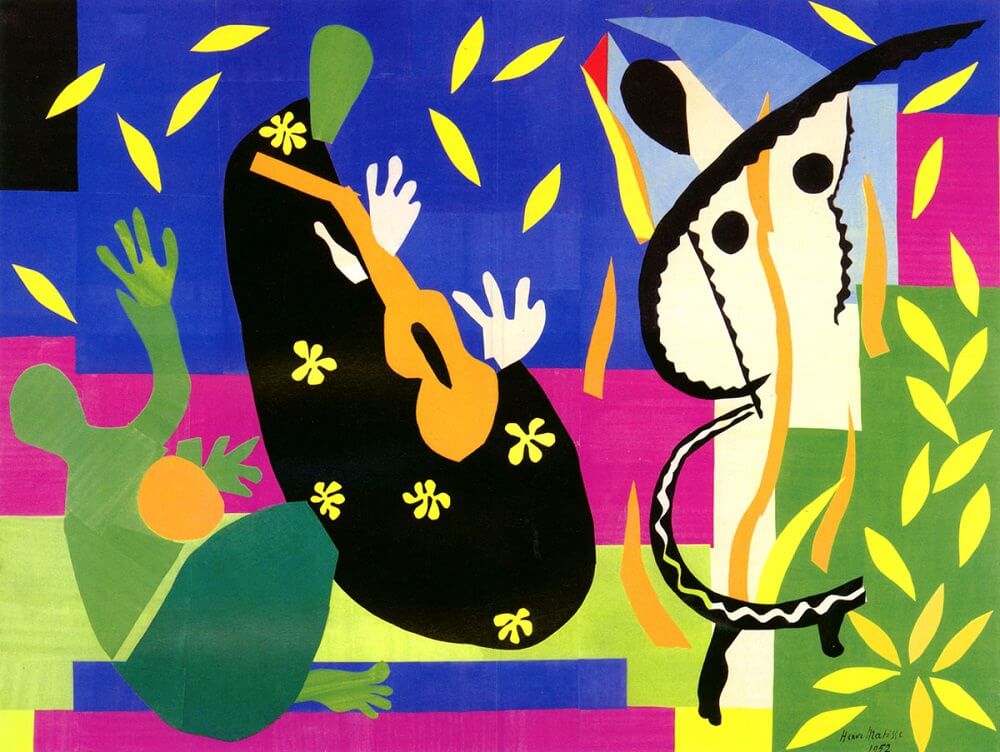Henri Matisse was known mainly as a French painter, but he was also a draughtsman and a sculptor. His intense colors, strong and spontaneous dabs brought him as one of the prominent figures of Fauvism. The term of Fauves (the wild beasts) was coined by Louis Vauxcelles when he saw the work of Henri Matisse and André Derain. One of Matisse’s masterpieces is The Dessert: Harmony in Red, but actually he has abundant incredible paintings.

The Dessert: Harmony in Red by Henri Matisse, (1908), Photo courtesy of https://www.henrimatisse.org/
These are 5 incredible works of Matisse that we have selected for you:
1. The Music (La Musique)

The Music (La Musique) by Henri Matisse, (1939), Photo courtesy of https://www.henrimatisse.org/
In this painting, Matisse depicts two woman musicians with floral background. His work is very soothing and calming. It feels like we enjoy a cup of coffee with live music in a café somewhere in Paris. The intense color and simple shapes do not overload our minds with complicated things. It fits with Matisse’s aim to create “an art of balance, of purity and serenity”. He also wants to make art that can be enjoyed by everyone that feels like “a good armchair which provides relaxation from physical fatigue”. Matisse painted The Music in 1910, in a duty that was given by Sergei Shchukin to decorate his Moscow mansion.
2. Sorrows of the King

Sorrow of the King by Henri Matisse (1952), Photo courtesy of https://www.henrimatisse.org/
This is one of Matisse’s paper cutout images. It portrays a silhouette of a man playing guitar in the background of a bright and colorful scene. This image brings the joy of life to the audience. The commentators sometimes refer the black shape to the silhouette of Matisse himself sitting in his armchair. He is surrounded by the pleasures that have colored his life, like music, art, and female figure. Matisse’s Sorrows of the King was created by him near the end of his life. He did not give up on his pain of arthritis, instead remained to continue his artistic process.
3. The Moroccans
“The Moroccans” by Henri Matisse (1912), Photo courtesy of https://www.henrimatisse.org/
The Moroccans shows a prayer and building like a mosque. Next by the prayer, there are abstract figures consist of orange circles and green things. The strong dabs and colors can represent the exciting experience during his journey to Morocco. Matisse was really struck by the Moroccans’ outfit, architecture, scenery, and daily activities. This painting takes us to feel the atmosphere of religious life and Muslim tradition in Morocco.
4. The Sheaf
The Sheaf by Henri Matisse (1953), Photo courtesy of https://www.henrimatisse.org/
This work is another paper cutout image by Matisse. The colorful raw shapes like leaves stretch across the field. The sheaf shares happiness and enriched life. One of the art curators says that there is a break side in this picture that invites us to join into the painting. Could you recognize that side?
Photo courtesy of https://www.henrimatisse.org/
5. The Egyptian Curtain
The Egyptian Curtain by Henri Matisse (1948), Photo courtesy of https://www.henrimatisse.org/
Matisse was interested in indigenous patterns, like Moorish, African, Oriental, or Egyptian patterns in the fabric. The scenery from a window also one of his favorite themes. He combines his two faves things in this painting. It is still not enough, beneath the window, Matisse adds another favorite object, that is, a still-life of fruits. The depth and intense color in this painting give cozy and homey feelings.
